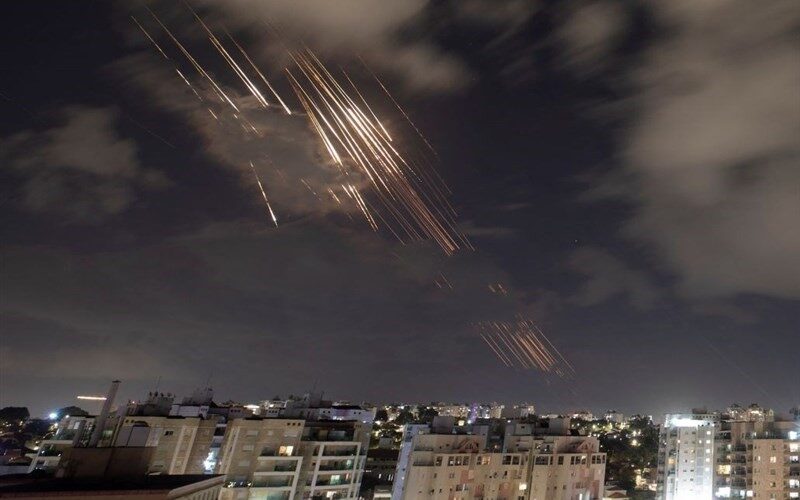Iran launched 200 missiles at Israel on the night of October 1, 2024, in what is believed to be the largest attack to date. According to Iranian President Massoud Pezeshkian, the attack was in response to the recent elimination of the leaders of Hamas and Hezbollah, two movements backed by Iran.
The majority of the weapons used were Shahab-3 ballistic missiles. However, according to the Islamic Revolutionary Guard Corps (IRGC), hypersonic missiles were also used for the first time in the attack.
In June 2023, Iran unveiled its first locally designed hypersonic ballistic missile, Fattah (Conqueror in Persian), with an advertised range of 1,400 kilometers (870 miles) and a top speed of Mach 13 to 15. To do so, the weapon relies on a Maneuverable reentry vehicle (MaRV), a type of warhead for ballistic missiles capable of maneuvering and changing its trajectory when re-entering the atmosphere for terminal guidance.
While the IRGC claimed that 90% of the missiles had hit their targets, the Israeli military stated that most of them had been intercepted.
“Iran made a big mistake tonight and will pay for it,” said Prime Minister Benjamin Netanyahu hours after the attack. “Whoever attacks us, we attack them.”
Israel’s multi-layered defense array
While Israel typically relies on its Iron Dome to intercept short-range rockets fired by Hamas or Hezbollah with success, this air defense system is only one part of the country’s multi-layered defense array. It is not designed to intercept high-speed ballistic missiles like those launched by Iran overnight.
To intercept high-speed threats like precision-guided munitions and medium-range missiles that the Iron Dome cannot cover, the Israeli Defense Forces uses the David’s Sling system developed by Rafael Advance Defense Systems and the US group Raytheon. This platform uses the Stunner missile for precise hit-to-kill interceptions at a distance of 40 to 300 kilometers.
The highest ballistic missile range of Israel’s multi-layered missile defense system is covered by the Arrow-2 and Arrow-3 anti-ballistic missile defense systems, jointly designed by Israeli Aerospace Industries (IAI) and Boeing. Arrow-2 targets short- and medium-range ballistic missiles within the atmosphere using a fragmentation warhead, while Arrow-3 intercepts long-range ballistic missiles outside the atmosphere using a hit-to-kill interceptor.
Israel was not the sole country engaged in the defense against the Iranian assault. According to the US Department of Defense, two Arleigh Burke-class destroyers, the USS Cole and USS Bulkeley, deployed in the Eastern Mediterranean, launched 12 interceptors at incoming Iranian ballistic missiles to defend Israel. The warships are part of the Aegis Combat System, an integrated naval weapons system designed to track and destroy incoming airborne threats such as missiles, aircraft, and even ballistic missiles.
“Today, US forces in the Middle East intercepted multiple missiles launched by Iran toward Israel, as we fulfilled our commitment to partner with Israel in its defense,” Secretary of Defense Lloyd J. Austin III reported in a statement.
Hours before the attack, the US Central Command announced the deployment of three additional aircraft squadrons (F-15E, F-16 fighters, and A-10 combat aircraft) in its area of responsibility.
Similarly, Jordan said its air defenses responded to missiles and drones passing through its airspace. It is unclear whether any other military participated.
During the previous combined attack by Iran on Israel in April 2024, French Rafale fighters deployed in Jordan as part of Operation Chammal scrambled to neutralize Iranian drones. AeroTime sent a request for comment to the French Ministry of Armed Forces and the French Air and Space Force.
Commercial flights caught in the attack
With Israel’s airspace still open at the time, some commercial flights were still operating above Tel Aviv while the attack occurred. The pilot of British Airways flight BA107 from London-Heathrow (LHR) to Dubai (DXB) shared footage from the cockpit showing how close the airliner came to the oncoming missiles. The flight was diverted to Larnaca International Airport (LCA) in Cyprus.
Filmed from flight deck of an airliner near Shiraz, Iran. No warning from ATC who had no idea. Turned away immediately. pic.twitter.com/Iq6k6jY9Zm
— Tim L-G🇺🇦 (@IntercityFC) October 1, 2024

